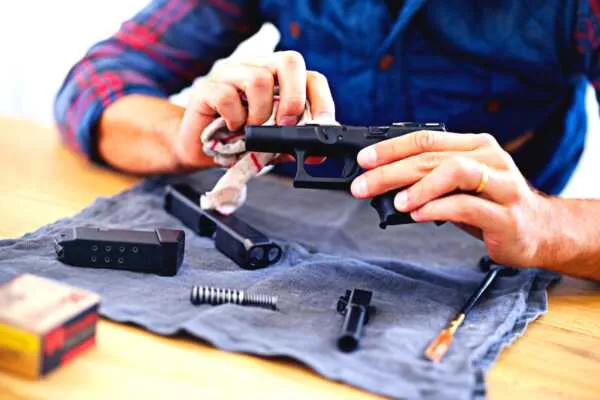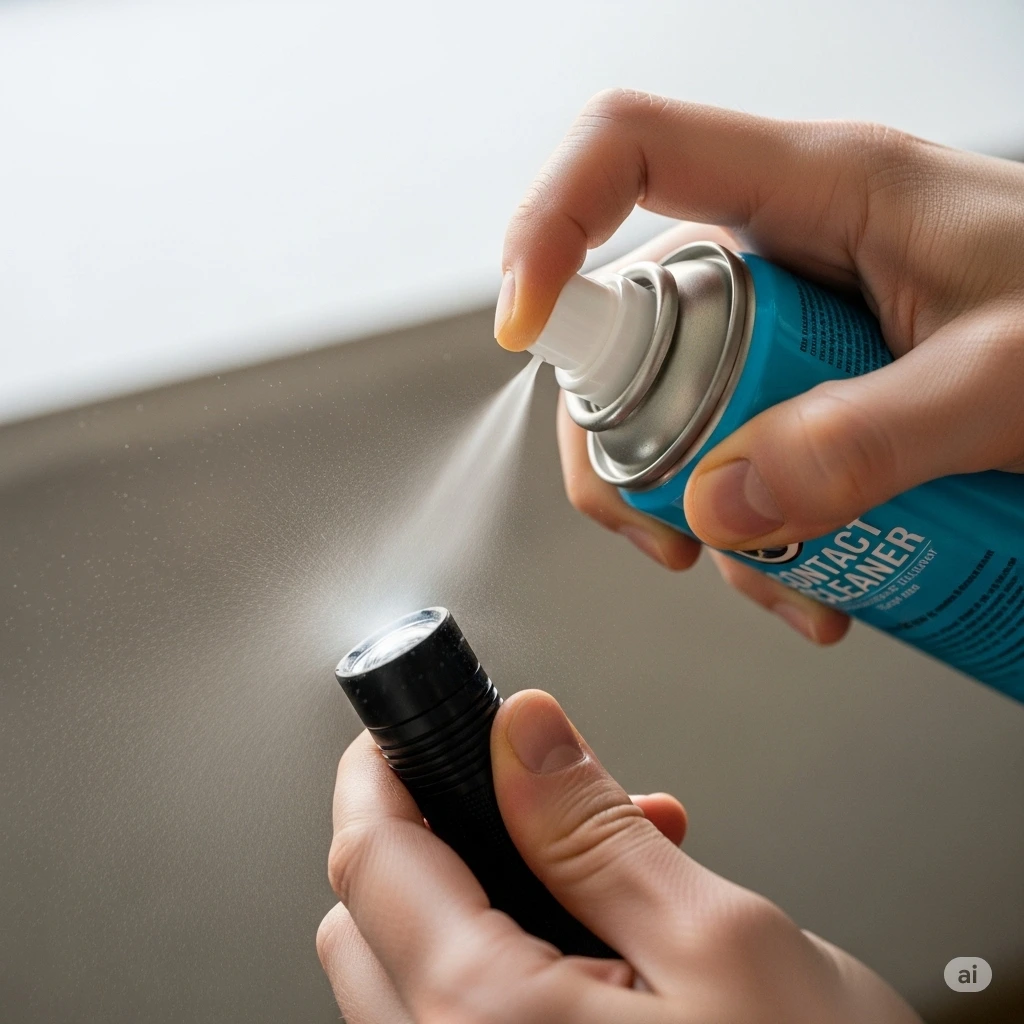Guide to Lubricants for Guns, Knives, and Tools
When it comes to keeping your gear in peak condition—whether it’s your trusted firearm, your favorite folding knife, or your everyday hand tools—lubrication is one of the most critical steps in maintenance. The right lubricant ensures smooth operation, prevents rust and corrosion, and extends the life of your equipment. But with so many options—Ballistol, CLP, PTFE, silicone spray, and others—how do you know which one is right for the job?
This in-depth guide breaks down the most common types of lubricants used for guns, knives, and tools. Whether you’re a shooter, a DIYer, or an EDC enthusiast, this article will help you make informed choices for your gear.
🔧 Why Lubrication Matters
Every mechanical system—no matter how simple or complex—relies on moving parts. Over time, friction, moisture, dirt, and oxidation can degrade performance or cause failure. A quality lubricant:
- Reduces friction and wear
- Prevents rust and corrosion
- Improves smoothness of action
- Protects from moisture, dust, and contaminants
- Extends the life of equipment
Without proper lubrication, even the best-made tools and firearms will eventually seize, rust, or break down.
🧪 Types of Lubricants Explained
There are five main categories of lubricants used on guns, knives, and tools:
- Traditional Oils (e.g., Ballistol, Hoppe’s No. 9)
- CLP (Cleaner, Lubricant, Protectant)
- Dry Film Lubricants (PTFE, Teflon)
- Silicone Lubricant Spray
- Greases (for high-load areas)
Let’s dive into each one—starting with the most universal.
🟢 1. Ballistol – The All-Around Favorite
Ballistol is a classic gun oil that also works on knives, leather, wood, rubber, and even plastic. Originally developed for the German military in the early 1900s, Ballistol is a biodegradable, non-toxic lubricant and protectant.
✅ Pros:
- Cleans, lubricates, and protects (similar to CLP)
- Non-toxic and skin-safe
- Excellent rust prevention
- Multi-material safe (metal, wood, leather, plastic)
❌ Cons:
- Slightly oily residue
- Strong medicinal smell (some love it, some don’t)
Use Case: Ballistol is perfect for maintaining guns, folding knives, multitools, and outdoor tools. Its moisture-displacing properties make it especially effective in humid climates.
🟡 2. CLP (Cleaner, Lubricant, Protectant)
CLP products, like Break-Free CLP, are widely used by the military and law enforcement. They’re designed to clean fouling, lubricate, and protect surfaces from rust—all in one bottle.
✅ Pros:
- Combines three functions in one
- Reduces fouling and carbon buildup (ideal for guns)
- Durable, military-grade protection
❌ Cons:
- Not as slick or smooth as dedicated oils
- Can attract dust in dirty environments
Use Case: Ideal for firearms that see regular use and cleaning. A great one-stop solution for range shooters and military-style rifles.
🔵 3. PTFE Spray (Dry Film Lubricant)
PTFE, often known by the brand name Teflon, is a dry lubricant. It sprays on wet but dries into a thin, waxy or powdery film that repels dust and reduces friction without leaving an oily residue.
✅ Pros:
- Dry film = doesn’t attract dirt or dust
- Reduces friction effectively
- Doesn’t drip or run
- Suitable for folding knives, gears, and tight tolerances
❌ Cons:
- Limited corrosion protection
- Not great in wet/humid environments unless reapplied frequently
Use Case: Excellent for pocket knives, hinges, multitools, and dusty workshop environments. Keeps moving parts smooth without collecting debris.
🟣 4. Silicone Lubricant Spray
Silicone spray is often overlooked, but it’s highly useful for tools and parts made from plastic, rubber, or a combination of materials. Unlike PTFE, silicone creates a slick, moisture-resistant film that’s non-conductive and safe on non-metallic surfaces.
✅ Pros:
- Safe on plastic, rubber, wood, and metal
- Excellent moisture barrier
- Non-staining, clean application
- Doesn’t attract much dirt
- Great for waterproofing and rust prevention
❌ Cons:
- Offers minimal rust protection on bare steel
- Can gum up if over-applied
- Not designed for high-friction, high-heat metal-on-metal contact (like firearm bolts)
Use Case: Ideal for garden tools, pliers, zippers, drawer slides, O-rings, and light-duty knives exposed to moisture or stored in wet areas (like fishing gear or toolboxes in boats).
🔴 5. Greases (Lithium, Synthetic, Moly)
Grease is thicker than oil and used when pressure and load-bearing capacity are important. It stays in place better than oil, but it’s not suitable for everything.
✅ Pros:
- Long-lasting
- Excellent for high-load or high-pressure parts
- Doesn’t drip or evaporate
❌ Cons:
- Attracts dirt and grit
- Not ideal for precision parts or fast-moving mechanisms
Use Case: Grease is best for pivot joints, power tools, garage door hinges, or heavy-duty equipment that sees intense mechanical force.
📊 Feature Comparison Table
| Lubricant Type | Friction Reduction | Rust Protection | Dust Resistance | Surface Compatibility | Best For |
|---|---|---|---|---|---|
| Ballistol | ⭐⭐⭐⭐ | ⭐⭐⭐⭐ | ⭐⭐ | Metal, wood, rubber, leather | All-purpose |
| CLP | ⭐⭐⭐ | ⭐⭐⭐ | ⭐⭐ | Metal | Firearms |
| PTFE Spray | ⭐⭐⭐⭐ | ⭐⭐ | ⭐⭐⭐⭐ | Metal | Knives, dry environments |
| Silicone Spray | ⭐⭐ | ⭐ | ⭐⭐⭐⭐ | Plastic, rubber, metal | Tools in wet/humid areas |
| Grease | ⭐⭐⭐⭐⭐ | ⭐⭐⭐ | ⭐ | Metal | Load-bearing tools |
🧰 Real-World Examples
- Guns (Semi-Auto Rifle/Pistol):
Use CLP for general cleaning and maintenance. Use Ballistol if you want a more eco-friendly option with similar protection. - Folding Knife (EDC/Outdoor):
Use PTFE for smooth action and low dust attraction. If the knife is exposed to saltwater or rain, finish with silicone spray for water resistance. - Multitool (Leatherman/Gerber):
Clean with Ballistol, lubricate moving parts with PTFE, and occasionally apply silicone spray to protect rubberized grips or plastic areas. - Pliers/Garden Tools:
Use silicone spray for rust resistance and smooth movement in outdoor environments.
🧼 Application Tips
- Always clean before applying a new lubricant.
- Apply light, even coats—excess lubricant attracts dirt.
- For silicone and PTFE, allow time to dry before reassembly.
- Reapply after exposure to water, solvents, or extended use.
🏁 Final Thoughts
There’s no single best lubricant for everything. It depends on what you’re using it for, how often, and where it’s stored. Here’s a quick cheat sheet:
- ✅ Ballistol: Best all-around for guns and knives.
- ✅ CLP: Best for firearm cleaning and protection.
- ✅ PTFE Spray: Best for dust-prone or precision items.
- ✅ Silicone Spray: Best for moisture-prone tools, rubber/plastic parts.
- ✅ Grease: Best for heavy-duty load-bearing parts.
For a serious enthusiast, it’s wise to keep at least two or three types on hand.







Post Comment